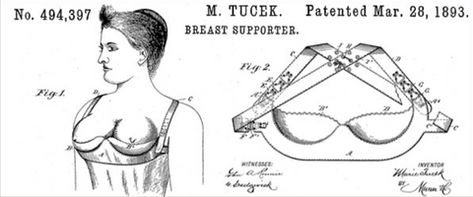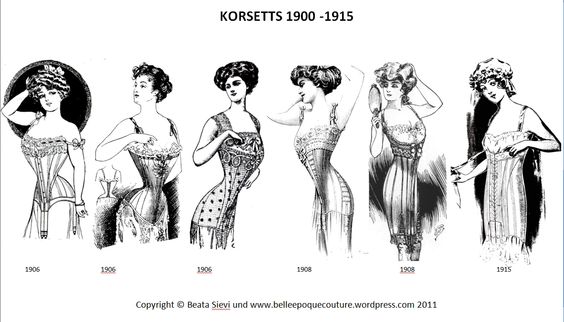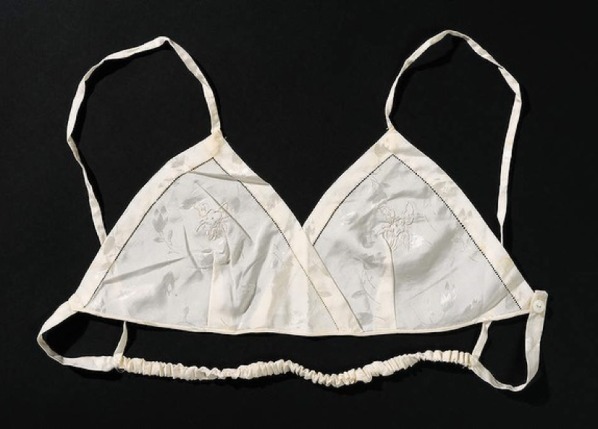In today’s modern society, bras have become an essential part of a woman’s wardrobe. But have you ever wondered about the fascinating history behind the invention of bras and the reasons for their creation? Understanding the origins of this undergarment can give us insight into the societal norms and ideals of the time. Let’s delve into the intriguing history of bras and explore when were bras invented and why and how they have evolved over the years.
Bra History Table
| Time Period | Bra History |
| Ancient Civilizations | Breast binding practices were developed in ancient civilizations to provide support and shape the chest using various materials and techniques. |
| The Corset Era | From the 16th to the early 20th centuries, corsets were popular for shaping the waist, lifting the bust, but posed health concerns. |
| The Birth of the Modern Bra | In the early 20th century, Caresse Crosby invented the modern bra out of silk handkerchiefs, prioritizing comfort and practicality. |
| Impact of World War I and II | During the wars, bras became mainstream as women took on men’s roles, leading to the development of new styles and materials for functionality. |
| Post-War Period | After World War II, bra styles evolved with the introduction of new fabrics and technologies, catering to the changing fashion and lifestyle demands. |
| Feminist Movement | In the 1960s and 1970s, the feminist movement embraced bra-burning protests as symbols of women’s liberation and breaking traditional beauty standards. |
| Technology Advancements | In the late 20th and early 21st centuries, advancements in materials and design revolutionized bra construction, offering a wide range of styles for different body types and preferences. |
When Were Bras Invented and Why?

The invention of bras dates back to ancient civilizations, where women recognized the need for breast support. While the early forms of bras were simple cloth bindings, they laid the foundation for the undergarments we wear today. The evolution of bras can be traced through various historical periods, each shaping the design and function of this essential piece of clothing.
Who First Invented the Bra?
The first documented bra-like garments can be found in ancient Greece and Rome, where women used fabric to support and shape their chests. These early forms of bras were rudimentary compared to the structured garments we are familiar with today. However, they set the stage for the innovations that would come in later centuries.
Early History of Chest Support
Throughout history, the concept of chest support for women has been a key aspect of apparel and beauty practices in various ancient civilizations. From early times, societies have recognized the importance of providing support and shaping for women’s breasts, leading to the development of breast binding practices.
The ancient Egyptians, for instance, used strips of linen wrapped around the chest to create a fitted look while providing support. In ancient Greece, women used bands of fabric or leather to bind their chests, creating a flatter appearance that was considered more fashionable at the time. Similarly, cultures in East Asia, such as China and Japan, also practiced breast binding using materials like silk and bamboo strips.
16th-20th Centuries: The Corset Era

The transition from fabric to structured garments marked the beginning of the corset era.
The Corset Era, which spanned from the 16th to the early 20th centuries, marked a significant shift in women’s fashion with the introduction of structured garments known as corsets. These garments were intricately constructed with boning and lacing to tightly cinch the waist and lift the bust, creating the desired hourglass silhouette that was considered fashionable at the time.
However, the use of corsets was not without controversy. Critics raised concerns about the negative impact of tightly-laced corsets on women’s health, with reports of restricted breathing, digestive issues, and even deformed rib cages due to prolonged wear. Despite these health risks, corsets remained a staple in women’s fashion for centuries, symbolizing ideals of beauty and femininity that were deeply ingrained in societal norms.
1910: The Birth of the Modern Bra


The emergence of the modern bra in the early 20th century marked a significant turning point in the evolution of women’s undergarments.
Caresse Crosby (born Mary Phelps Jacob), a socialite from New York, sought to address the discomfort and constraints of traditional corsets by designing the first modern bra out of two silk handkerchiefs and some ribbon. Her revolutionary design focused on providing support and shaping while also prioritizing comfort and freedom of movement for women. This marked a departure from the rigid and constricting nature of corsets, allowing women to move and breathe more freely.
Crosby’s invention not only transformed women’s undergarments but also paved the way for the bras we wear today. Her emphasis on practicality and comfort set a new standard for undergarment design, shaping the future of women’s lingerie and influencing the development of various bra styles and technologies over the years.
Impact of World War I and II: Functionality
World War I and II had a significant impact on women’s roles and fashion, including the evolution of bras as essential garments in women’s wardrobes. During both world wars, as men enlisted in the military and women stepped into roles traditionally held by men in factories, offices, and other sectors, the demand for practical and comfortable undergarments became more important than ever.
Wartime restrictions on fabrics and materials meant that the traditional lace and intricate designs of bras were no longer feasible. As a result, bras underwent a transformation in terms of design and construction to prioritize functionality and durability. This shift led to the development of new styles and materials that were more suited to the demands of wartime life, such as cotton and nylon blends that were both durable and easy to maintain.
The Rise of Lingerie Fashion
As society shifted towards more progressive attitudes, lingerie fashion evolved to reflect changing ideals of beauty and body shape. Undergarments transitioned from utilitarian to fashionable, with different styles and materials being introduced to cater to diverse tastes and preferences. Lingerie became a form of self-expression and empowerment for women, highlighting the ongoing evolution of bras in the fashion industry.
Technological Advancements in Bra Design
Advancements in bra design have led to the introduction of underwire and padding, providing increased support and shaping for women of all body types. The evolution of bra sizing and fit has also made it easier for women to find the perfect bra that suits their needs and preferences. Technology continues to play a crucial role in the development of innovative bra designs that prioritize comfort, functionality, and style.
Cultural Influences on Bra Design
Cultural influences have shaped the design of bras, with changing ideals of beauty and body shape impacting the styles and trends in lingerie fashion. The representation of bras in media and popular culture has further influenced consumer preferences, driving the demand for bras that cater to a diverse range of body types and aesthetics. The evolution of bras mirrors the shifting attitudes towards femininity, beauty, and self-expression in society.
Now: Movement towards Comfort and Inclusivity
In recent years, there has been a growing emphasis on comfort and support in modern bra design. Women are demanding bras that prioritize their well-being and body positivity, leading to a push for inclusivity in size and style options. Brands and Bra manufacturers are now offering a wider range of sizes and styles to cater to the diverse needs of consumers, such as strapless bras and sticky bra, reflecting a shift towards more inclusive and body-positive lingerie choices.
Conclusion
The evolution of bras from ancient cloth bindings to modern structured garments reflects the changing attitudes towards femininity, beauty, and comfort. Understanding the origins of bras provides us with insight into the societal norms and ideals that have shaped the design and function of this essential piece of clothing. As we continue to embrace inclusivity and comfort in lingerie fashion, the future of bras looks bright, with innovation and empowerment driving the evolution of this iconic undergarment.
Related Questions
1. When were push-up bras invented?
Push-up bras were first introduced in the late 20th century, revolutionizing the way women perceive and enhance their busts.
2. When were sports bras invented?
Sports bras were invented in the 1970s to provide support and comfort for women engaging in physical activities, revolutionizing athletic wear for women.